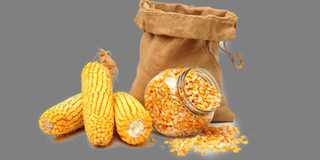Premium
Kagwe bows to pressure, opens imports as unga prices hit 13-month high

Agriculture Cabinet Secretary Mutahi Kagwe.
The Agriculture and Livestock Development Ministry is set to open imports of 5.5 million bags of yellow maize to ease pressure on the white variant of the commodity whose prices have jumped by as much as 26.47 percent since December, hitting households reliant on the staple food.
Cabinet Secretary Mutahi Kagwe said that the State would grant a 50 percent duty waiver for the yellow maize imports over a year.
“The Ministry of Agriculture and Livestock Development notes the growing competition between animal feed millers and maize millers for human consumption over the limited maize grain stocks available in the country. As a result of this increasing demand, the price of a 90-kilogramme bag of maize has risen by approximately 26 percent compared to three months ago,” he said.
The rise in maize prices has been reflected in the cost of maize flour as millers passed on the changes to consumers.
For example, an analysis of data collated by the Kenya National Bureau of Statistics shows market data shows that a two-kilogramme packet of fortified maize flour sold for an average of Sh165.05 in March -- the highest level in 13 months.
That price represents a 2.94 percent rise over February and 14.11 percent over last October, the official data shows.
Flour millers have attributed the renewed upward price pressure for flour, or unga as it is best known, to reduced domestic supplies, prompting them to rely on imports from south-neighbouring Tanzania.
“Farmers are holding minimal stock [of maize grain], while traders are speculating on price increases,” Paloma Fernandes, chief executive of the Cereal Millers Association, said in an email response to questions on the rising maize prices.
“[Animal] feed millers are competing for the same maize supply as no waiver has been gazetted for imported feed maize, further increasing demand” she added.
Mr Kagwe said that to address the situation the government will allow imports of yellow maize by qualified animal feed millers with sufficient capacity.

A ship with more than 42,000 tonnes of yellow maize is expected to dock in Mombasa.
“The objective is to reduce pressure on local white maize stocks by shifting animal feed millers to yellow maize. This will allow millers focused on human consumption to access available maize at fairer prices, ultimately leading to reduced production costs and more stable unga prices for consumers,” the CS said, adding that the imported maize will be non-GMO.
The Association of Kenya Feeds Manufacturers and Poultry Breeders Association of Kenya had petitioned Mr Kagwe to intervene by facilitating the opening of a window for duty-free imports of maize from outside of the East African Community trading bloc.
Mr Kagwe urged farmers to consider bigger production of yellow maize to balance the market, which has a demand of about 1 million tonnes annually by the animal feed industry.
“Additionally, the government will release regular maize from the National Food Reserve to millers producing maize flour for human consumption. This intervention aims to cushion the mwananchi from the impact of soaring unga prices,” the CS said.
Dr Timothy Njagi from the Tegemeo Institute, the country’s food think-tank, said maize and flour prices are likely to continue skyrocketing amid high demand for the commodity in the market.
He said that the ban on imports would cushion local farmers against price fluctuation, but the prices of the flour are to remain, subjecting most households to financial pains.
"The ban on maize and wheat imports will benefit farmers, but when the farmers get higher prices, it will mean that consumers will continue to pay higher prices for the flour. The rise in maize price signals that that flour will continue to go up,” said food policy expert, noting that the government needs to come up with interventions to cushion vulnerable households.





